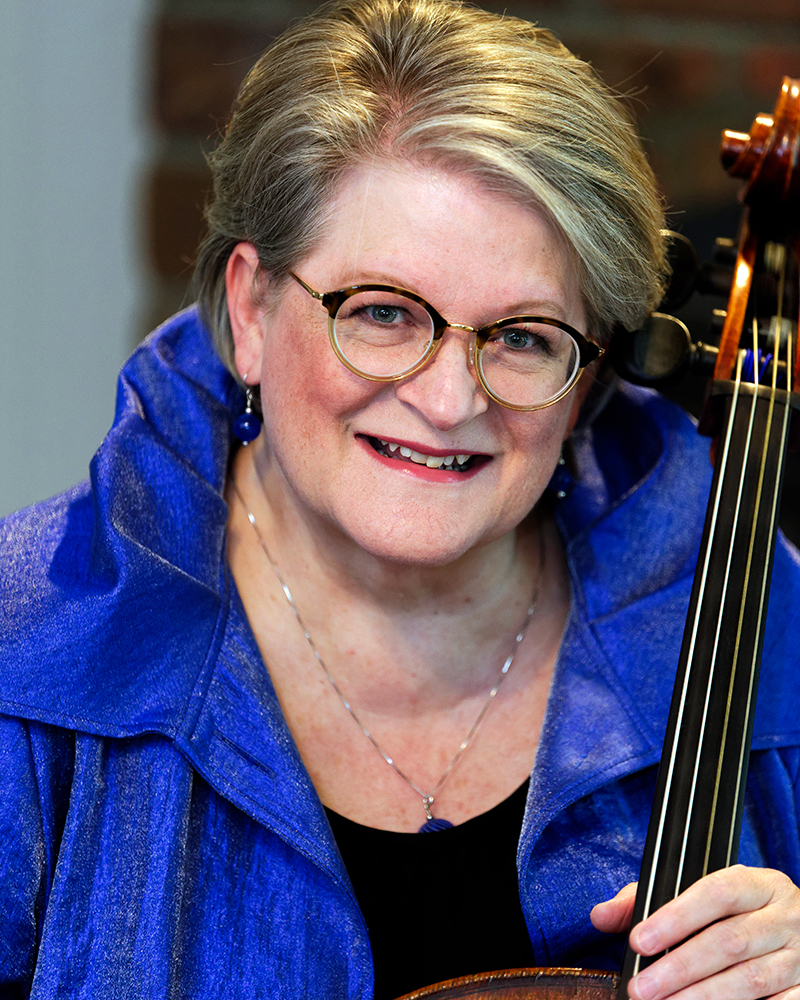
Presented by Equity Bank
We don’t think of musical instruments as having ancestors, but they do. The piano wouldn’t be here today without its forebear, the harpsichord. Ancient harps and lyres predated violins and other stringed instruments, such as the cello.
Trilla Ray-Carter, a renowned cellist who formerly taught at William Jewell College, loves gathering other musicians who value antique instruments, the unique sounds they make, and the 17th- and 18th-century music the instruments were destined to play. “Historically informed” music is the technical term. She and her husband, Monty Carter, a violinist, helped found the nonprofit Kansas City Baroque Consortium in 2016, where Ray-Carter is the executive and artistic director. Says Ray-Carter, “We launched our annual summer series in 2017 and produced three wonderful seasons prior to the pandemic. We survived the pandemic by offering unique online offerings and through the generous support from our donors and audience.”
KC Baroque returned to live performance in 2021. This summer, they present their 6th season of concerts: Music in the Age of Enlightenment, with performances on July 29 and August 16.
What is it about the music of the Baroque period—17th and 18th centuries—that appeals to you?
I’ve always gravitated toward music from the Baroque era, even as a child, and when I began piano and cello lessons I discovered my favorite composer was Bach. The first time we played Handel in my school orchestra I begged our music teacher to do more pieces like this. It was the energy, the complexity and order, the sheer beauty of this music that seemed to pull me in! Through my college studies as a music major I came to deeply love a wide variety of repertoire from all eras, but I had a special affinity toward music of the Baroque.
How did KC Baroque come about?
In the 1970s and 80s, recordings of early music performed on historical instruments (or historical reproductions) filtered into the mainstream airways of classical radio, and I became increasingly fascinated, first by the sound of these authentic instruments, and secondly by the approach to interpretation that these modern-day early-music pioneers were offering us. More and more early-music recordings heard today are performed on period instruments. To that I say “hooray!”
In 2008 and 2009 I took the plunge. I signed up to participate in the annual seminar offered by the International Baroque Institute in Cambridge, Massachusetts, where I enjoyed an immersive experience in this new/old sonic world. Working for the first time on a period instrument with some of the leading specialists in period performance, I walked away with such inspiration to find a way to continue this journey. I returned home and decided I would create my own incubator for early music exploration, and founded the Kansas City Baroque Consortium.
You play a cello crafted in Vienna in 1836. What is different about this instrument compared to a modern cello?
The whole world of period instruments is quite fascinating. We know many changes have taken place in the production of musical instruments over time. So, as we seek to recreate an authentic soundscape for music in the Baroque era, we look for either historical instruments or modern replicas of historical instruments. Like all early-music specialists, we play on strings made from sheep, ram, or cow gut—not cat gut, as we often hear. (So, rest assured your cats are safe with us!) Our bows are convex shaped like a bow and arrow, as opposed to the later concave shape developed in the Classical era and used today. As well, the use of chin rests, shoulder rests, and endpins were not yet in use in the Baroque era. My 1836 Viennese cello built by Martin Stoss is not quite in the Baroque era, but is such a beautiful instrument and it serves the period sound we are looking for. My husband plays a 1740 violin, and our colleagues play on instruments which are either from the period or modern reproductions of historical models.
How has Kansas City nurtured your musical spirit and career?
Having grown up in Joplin, I returned to the Midwest in 1993 after several years of study and professional work that led me to Los Angeles. Choosing to land in Kansas City was fortuitous! It has proven to be a community that truly supports the arts and offers fertile ground for artists to pursue their vision. If you are willing to do the hard work, there is guidance, opportunity, and support here.


